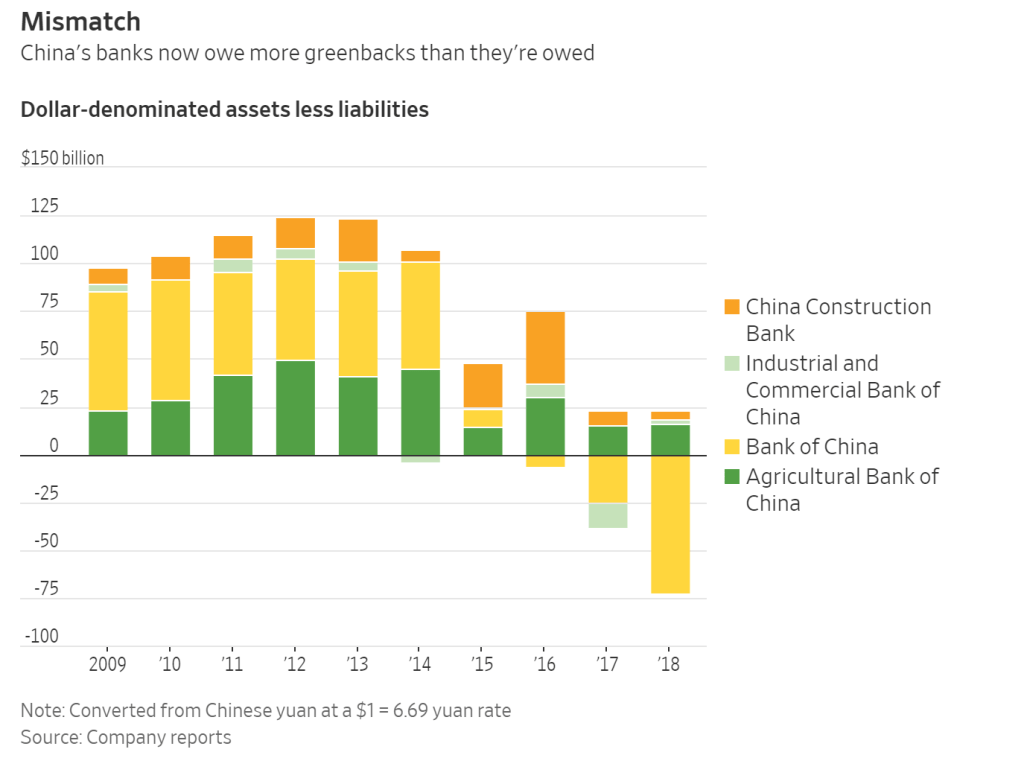I don’t think the mainstream financial media and passive investors understand the severe dollar-shortage that’s happening in China.
And what it’s heading towards.
To refresh your memory – because of slowing growth, a strong dollar, and aggressive tightening from the Federal Reserve via rate hikes and QT (Quantitative Tightening), Chinese firms have suffered greatly over the last 16 months.
For example – 2018 was a record year for onshore Chinese corporate defaults. And 2019 looks like it could be even worse.
So – why’s this happening?
Because most Chinese firms have significant dollar-denominated debts.
Think of it this way – onshore Chinese firms with dollar-denominated debts (liabilities) will need dollars to pay their interest and principle back. But as the dollar gets stronger (aka the USD/CNY gets weaker). And borrowing costs rise – it becomes more expensive to do this. Thus – forcing firms to miss bond payments or outright default.
Thus – a stronger dollar and higher interest rates make these debt burdens much harder to service.
And – unfortunately for these firms and their creditors – this trend will continue into the immediate future. . .
That’s because Chinese businesses still owe over $2.25 trillion in dollar-denominated debts that are maturing over the next couple years (by year-end 2021).
Note that these Chinese firms have been borrowing new dollar-debts from Chinese banks so that they can stay solvent.
But now – it looks like the dollar-funding problem has found its way into China’s banking sector. . .
Meaning: Chinese banks are running low on U.S. dollars also, preventing them from funding both domestic and abroad activities.
As the Wall Street Journal (WSJ) recently shared – the combined dollar-liabilities at China’s four largest commercial banks now significantly exceed their dollar–assets.
Otherwise said – these Chinese banks now owe more dollars to creditors and customers than what’s owed to them.
Take a look for yourself.

This is a sharp drop from only a few years ago – when the four big banks together had over $125 billion in net dollar-assets (2014).
But – even with all the banks suffering outflows – the main culprit for this reversal is The Bank of China (yellow bar).
For instance – The Bank of China only just four years ago had more dollar-assets than all of the other big banks.
But by the end of 2018 – they now have over $72 billion in dollar-liabilities. (That’s a net-change of -$128 billion in only four years).
This is a troubling trend. . .
So – with both overly-indebted domestic firms and banks running low on U.S. dollars – this puts China in a fragile position. Especially if there are any negative shocks in the dollar-funding markets.
The slowing growth in China (and across Asia) will put pressure on corporate cash-flows. This will make re-paying the $2.25 trillion in dollar-debt – all that’s due over the next 30 months – even more difficult to do.
Therefore – I expect further onshore defaults. And for bank dollar-liabilities to continue piling up.
But eventually – there will be a ‘tipping point’ for China because of all this dollar debt.
Who knows. Last year it was corporate defaults. This year – it could be bank defaults. . .
